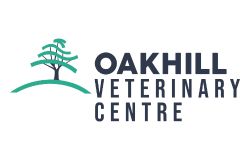Look out for Lungworm
Lungworm outbreaks are unpredictable but are more prevalent following warm wet weather spells (thankfully not at the time of writing!). Immunity requires repeated exposure, therefore older cattle may become susceptible if they have not been exposed to sufficient challenge within the last 2-3 years.
Suspect lungworm infection if there is widespread coughing or respiratory distress in grazing calves or adult cattle. Coughing may be more noticeable when cattle are gathered. Milk drop is seen in dairy herds experiencing a lungworm outbreak.
Affected cattle should be treated as early as possible. Severely affected cattle may not respond to treatment due to the large number of dead larvae blocking the lower airways and secondary bacterial pneumonia. Treated cattle should be removed from infected pasture and transferred to clean pasture if available or well-ventilated housing.
All available anthelmintics are effective against lungworm. To date, there are no confirmed resistance issues. Anthelmintics vary in their duration of residual activity. For example, Enovex is active against lungworm for 28 days.
Bought-in calves or adult cattle may introduce lungworm onto a farm, so quarantine and treat all incoming cattle. If you have a known problem on your farm then purchased cattle should be vaccinated prior to grazing.

